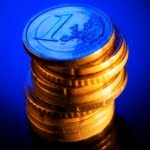
According to the Philips curve there was supposed to be an inverse relationship between inflation and unemployment. When the unemployment rate increases, the inflation rate decreases. Conversely, when the unemployment rate decreases, the inflation rate increases.
How could it be that both were going up at once? Of course, it took years of government intervention into the economy to pull off such a feat. Let’s explore…
When unemployment began rising in the 1970s the U.S. Treasury did what Keynes had taught…they ran deficits and spent money to create jobs. But, to their surprise, they did not get jobs. Instead, something unexpected happened. They got inflation.
When they tried it again, amazingly, they still did not get jobs. To their chagrin, they got more inflation. By the time Jimmy Carter left the White House, the misery index, which is the sum of the unemployment rate and the inflation rate, was rocketing toward 20 percent.
About that time Franz Pick famously declared that “bonds are certificates of guaranteed confiscation.” Not until Fed Chairman Paul Volker pushed 10-Year Treasury yields above 15 percent in 1981 did price inflation slow. Then, remarkably, after decades of rising yields, things began to reverse course.
Something Has Gone Amiss
By 1982, with the inflation cat back in the hat, income investors were entering into their finest days. No one would have believed it at the time, but buying a 10-Year Treasury in 1981, and locking in a decade of 15 percent returns, was an ultra-savvy investment.
Over the next decade, inflation, as measured by the consumer price index, increased around 3-to-4 percent. Hence, fixed income investors received an inflation adjusted return of about 12 percent a year, and didn’t have to think about it. Moreover, investors who recognized the beginning of the long-term trend of falling treasury yields were able to consistently trade bonds prior to maturity and profit from their price appreciation.
The factors in place that led to a three-decade trend of falling treasury yields are all but gone. This week, for example, 10-Year Treasury yields fell back to below 2 percent. It doesn’t seem likely that they’ll go much lower. At the same time, credit markets have become disconnected with reality. Something has gone amiss.
According to the latest consumer price index report released by the Bureau of Labor Statistics, inflation over the last 12 months increased 2.9 percent. This means, over 12 months a 10-Year Treasury offers a real return of minus 0.9 percent.
Given the $2 trillion of Fed money creation that’s occurred since 2008, it’s highly probable that inflation will rise over the next decade. Fixed income investors are practically guaranteed a negative real return over the next 10 years. What gives?
Similar to the logical impossibility of inflation and unemployment rising in tandem are treasury yields below the rate of inflation. Inauspiciously, this has also been made possible by the heavy handed intervention of the central bank into financial markets.
Sowing the Seeds of Mass Inflation
Like demanding a bountiful harvest from the land, a bountiful supply of money, too, can be demanded. Of course, in an economy, like a harvest, you reap what you sow. What we mean is all money is not created equal.
There’s real money earned through productive enterprise and there’s pretend money added through increases in digital monetary credits induced by central bank price fixing of interest rates. In this regard, it’s not in man’s power to properly set the price of money, just as it’s not in man’s power to set the boiling point of water…or to make pi a rational number.
Sure you can measure the boiling point of water and you can round pi off at two decimal points. But you can’t change it. Even if some government official passes a law that says water shall boil at 200 degrees F and pi shall be rational, it doesn’t matter, because physical law has already decided that water’s boiling point is 212 degrees F and that pi’s decimal representation will never end nor repeat.
“Cause and effect,” said Ralph Waldo Emerson, are two sides of one fact … [like the] seed and fruit they can never be severed.” Further, “the effect already blooms in the cause, the end pre-exists in the means, the fruit in the seed.”
The price of money – the real rate of interest – is ultimately determined by the market. When some government meddler blindly sets its price below the rate of inflation extraordinary and unintended consequences occur. Economic distortions bubble up and pop.
The seeds of mass inflation have been sown. No doubt, the fruits will rot without ripening.
Sincerely,
MN Gordon
for Economic Prism
Return from Sowing the Seeds of Mass Inflation to Economic Prism




